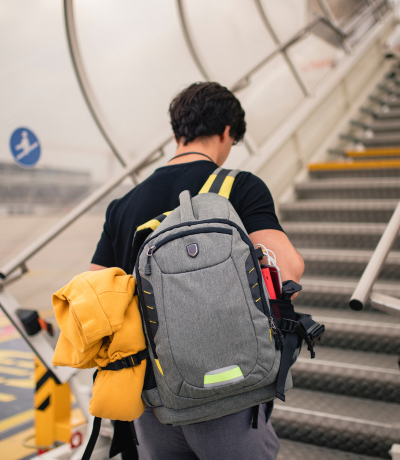How do you know your flight is safe?
26 January 2024
Images and videos of planes on fire and gaping holes in aircraft may be undermining your confidence in air travel―and you should be concerned. Worries about airline safety have prompted some new FAA investigations, which may lead to new regulations.
In the meantime, the data says that US air travel is safe, it can always be safer, right?
Pilots of small aircraft have a pre-flight safety checklist, but passengers on commercial flights can’t really inspect the plane before they fly.
Still, travelers everywhere are asking how they can tell if their plan is safe, so we consulted the experts to find out.
The following is a list of the safety checks you can do as a passenger to ensure (to the best of your ability) that your flight will be safe. Let’s get started.

Avoid flying on banned airlines
Before you make travel plans, check the list of airlines that are banned because of safety concerns and avoid flying with them. The airlines on the list are banned because they do not meet minimum safety standards and/or have insufficient government oversight.
Bonus: Learn about problematic aircraft types and avoid those too! Looking at you, 737 Max.
Check the airline’s safety audits
There is one internationally recognized airline safety audit, the International Air Transport Association’s Operational Safety Audit (IOSA). IOSA verifies that airlines meet or exceed international operational safety requirements and tracks each airline’s safety ranking across:
- flight operations
- ground handling
- security management
- maintenance
Airlines that are registered as IOSA-compliant must renew their status every two years. The IOSA registry shows which airlines have undergone the audit. You can type in or search the airline’s name and review their ranking and audit expiration date.
Look for alliances
Some airlines create alliances like Oneworld and Star Alliance, which for the most part, give passengers some cross-airline perks. What’s helpful to know is that when airlines group up into alliances, they ally themselves with similarly successful and reliable airlines.
In essence, the airlines in an alliance require the same standards for all the partners, which can give you a greater sense of trust regarding the safety of their planes and pilots.
Scrutinize the plane for tell-tale signs
There are a few tell-tale signs that a plane may not be as safe as you’d like it to be. None of these automatically make the plane unsafe to fly in, but they are signs you may want to be concerned about.
- Strong unpleasant odors like fuel, sewage, or burning. These could indicate an aircraft that’s not been recently maintained, or there’s a problem with the plane’s systems.
- Serious wear and tear. An excessively worn-out interior could suggest a lack of maintenance, but things that are obviously broken should be a red flag.
- Stains or leaks. Just like your car, stains are something to worry about and could indicate a problem with the airplane’s systems.
Calling a crew member’s attention to the items that are concerning may not help you get on a different flight; however, if the crew acts dismissively, you may be on the wrong plane.
One final tip: Please pay attention to the safety briefing every time you fly. Yes, you’ve heard it before, but it can make the difference in an emergency.
Related topics
Damian Tysdal is the founder of CoverTrip, and is a licensed agent for travel insurance (MA 1883287). He believes travel insurance should be easier to understand, and started the first travel insurance blog in 2006.
